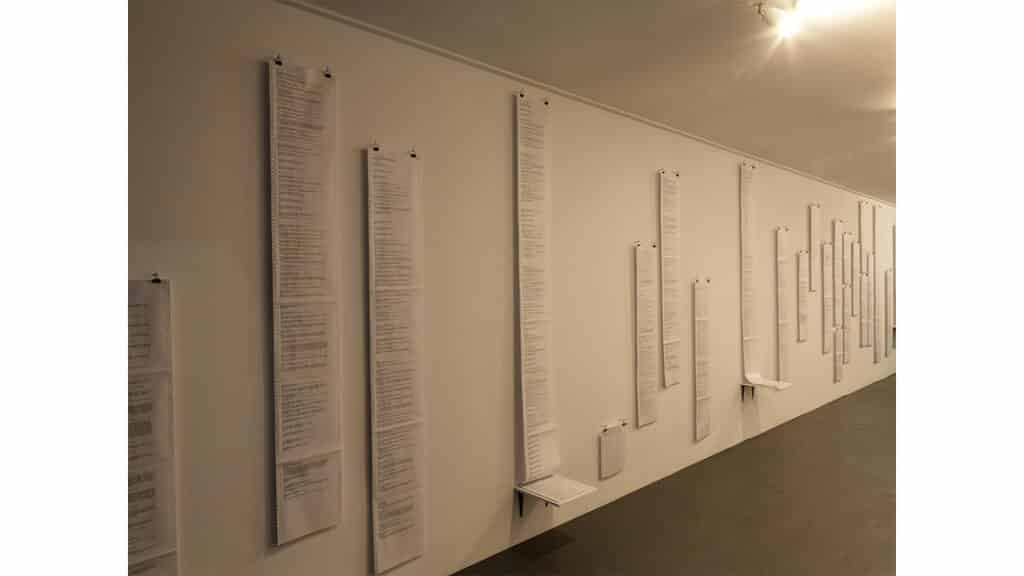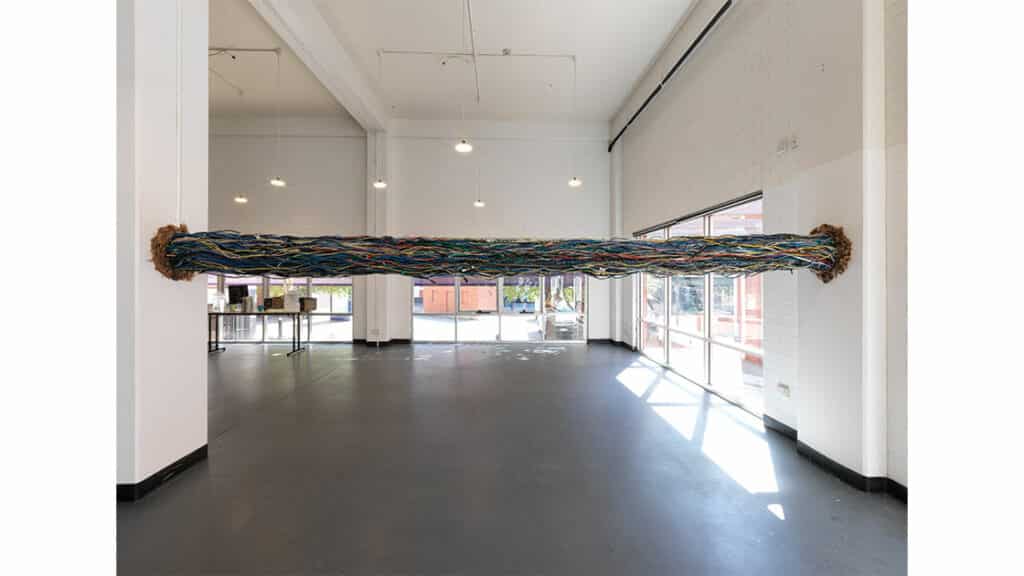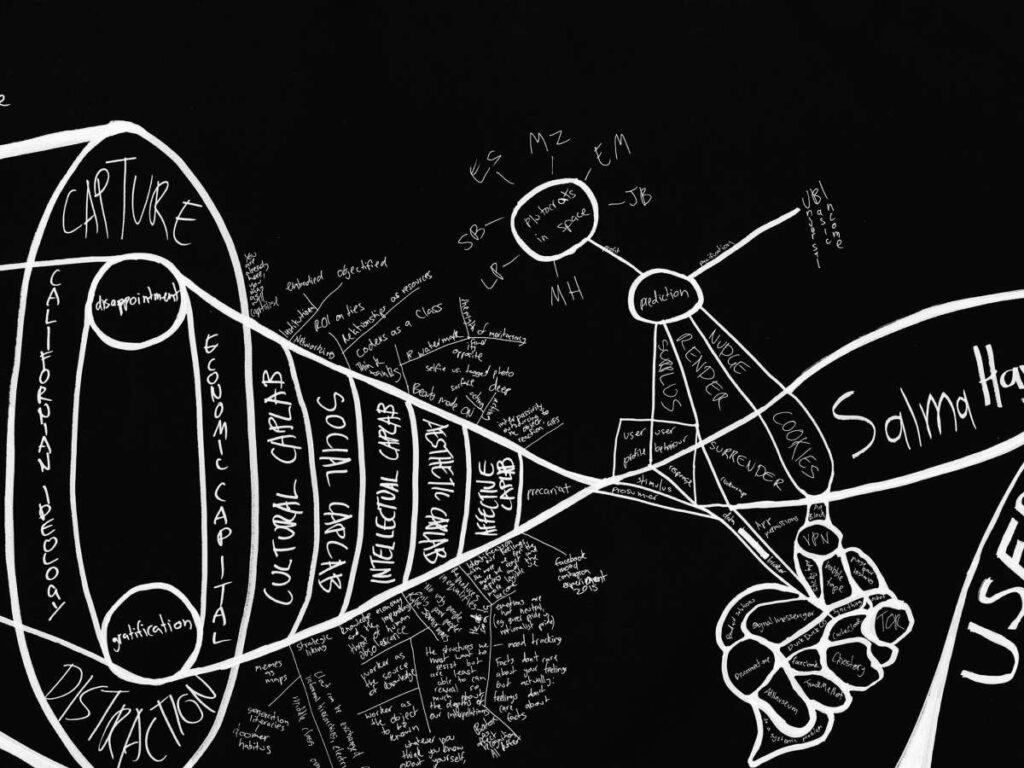In its relatively short history, 40 years give or take, the internet has become enmeshed with most of our lives, as a utility, distraction, entertainer and more ominously it has power to influence and anticipate our behaviour. Social media has been a hugely influential development within this digital realm, one which for better and worse sustains a symbiotic relationship between humanity and technology. As such Patrice Sharkey has curated the group exhibition ‘Metaverse’ at ACE Open in Adelaide to explore this complex union.
Artists Giselle Stanborough, Roy Ananda, Harun Farocki and Britt d’Argaville consider what it means on a human-level to be shaped and governed through the advent of the internet, in a context where it feels inescapable, especially as Mark Zuckerberg’s social media platform ‘The Metaverse’ seems to imagine that real life could migrate into a virtual world.
In response to the idea that identities exist online as well as a lived experience, with a flow of influence and information between the two, Roy Ananda has created a self-portrait. It is not a visual likeness nor a single piece. Instead the artist’s installation is composed of diagrams, designs and his data. Ananda shares the results of 1000 online personality tests in ‘Electronic void illusion 2’ which prompts us to think about the desire to input personal information, be told who we are and the act of sharing it with others (for perhaps another layer of validation) all strange hallmarks of social media where the personal and public collapse into something else.

Ahead of his time, Harun Farocki’s work ‘Parallel’ came to be before the notion of the Metaverse was proposed, and the artist’s death in 2014. ‘Parallel’ considers the nature of being or nature of things in worlds created by computer animations. Farocki felt it important to consider this genre of image as he forecast that computer generated images were surpassing film.

‘the chords are kissing (Chateau Marmont)’ by Britt d’Argaville appears like a tree trunk growing horizontally out of the gallery walls. It is made of old electric cords and ethernet cables, intertwined and titled as if in a passionate act. As such the technology takes on an anthropomorphic feel, which could lead us to think of the autonomy or AI potential of what lies beneath, behind the walls, or our screens.

Giselle Stanborough shares ‘Cinopticon’ which is an immersive installation of hand painted diagrams on the walls that envelope us, they pick apart the pervasive and perhaps manipulative outcomes of social media and its algorithms, in its usefulness as surveillance, which can be linked to capitalist motivations.
These artists together consider what happens as the delineation between our humanity and our technology blurs, or is co-dependent. The show is on view until 14 May.